There are a number of places around the globe that just lend themselves towards a road trip. Patagonia is one of them; a place of rugged mountains, thick forest that transitions into arid, wind blasted grasslands and, running throughout, the vast, open road.
Driving to or around Patagonia is a means of exploring a remote destination that has attracted adventurers for centuries and, with the state of the road improving each and every year, there are fewer reasons not to do so.
This guide follows my multiple visits to Argentine and Chilean Patagonia, where I’ve rented a car and explored vast stretches of road – and learned a lot about driving and road conditions along the way.
I’ve collated all of the information you need to know about car rental in Patagonia, getting around Patagonia on your own four wheels and I’ve even thrown in a road trip itinerary to get the inspiration flowing.
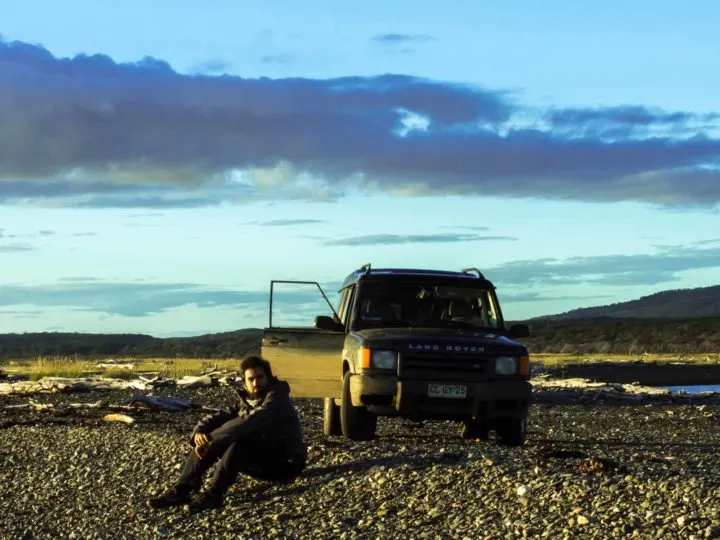
Where (and why!) should you drive to in Patagonia?
As someone who’s driven sections of the famed Southern Highway, aka the Carretera Austral and gone beyond-the-beaten trail on some increasingly dodgy roads in Chilean Tierra del Fuego, the question you should really be asking yourself is why shouldn’t you drive in Patagonia?
The landscapes are extreme and sublime and the roads that traverse them offer a window into the southernmost hinterland of the continent, making it an absolute gem of a South America road trip.
If you’re seeking places with barely a trace of human interaction and to discover some of the world’s most beautiful, pristine terrain, Patagonia is your place (although you might want to find out exactly where Patagonia is before planning anything).
Bear in mind that the best time to visit Patagonia is generally in the Austral summer (December through March) or shoulder seasons (October/November and April). This is when the weather is settled and you can expect conditions to be suitable for driving – i.e. not too much snow, an issue that the region faces when it enters winter!
The main destinations for a Patagonia road trip are:
The Carretera Austral
The Carretera Austral is considered one of South America’s finest road trips: a 1,240-kilometre, mostly unpaved route that winds itself from the Chilean Lakes District deep into the heart of Aysén, Chile’s least populated region.
It lies in what’s considered northern Chilean Patagonia (that’s quite a mouthful!), which effectively means it lies along the very western coast of South America and is separated from Argentina by the ridge of the Andes Mountains.
It’s possible to link this road up with Southern Patagonia via the border crossings at Futaleufu, Chile Chico and in Patagonia National Park, while you can also head through to fjords via the Tabsa ferry that departs from Puerto Yungay (in the far south) and travels to Puerto Natales and southern Chilean Patagonia.
Southern Chilean Patagonia
While many people visit Southern Chilean Patagonia – it’s home to Torres del Paine National Park after all – any road trip here is best combined with a drive along Ruta 40 (if you’ve not got much time), Tierra del Fuego (if you’re feeling adventurous) or the Carretera Austral (if you’ve got at least three weeks).
You can head north from here to the Carretera Austral via the Tabsa ferry that departs from Puerto Natales and heads to Puerto Yungay (in the far south of the Carretera Austral) or into Argentina via Paso Río Don Guillermo, from where you can continue to El Calafate.
To reach Tierra De Fuego, you’ll want to take the TABSA ferry across to Porvenir or drive east and take the TABSA ferry from Cruce Punta Delgada to reach Cruce Bahía Azul and Tierra del Fuego.
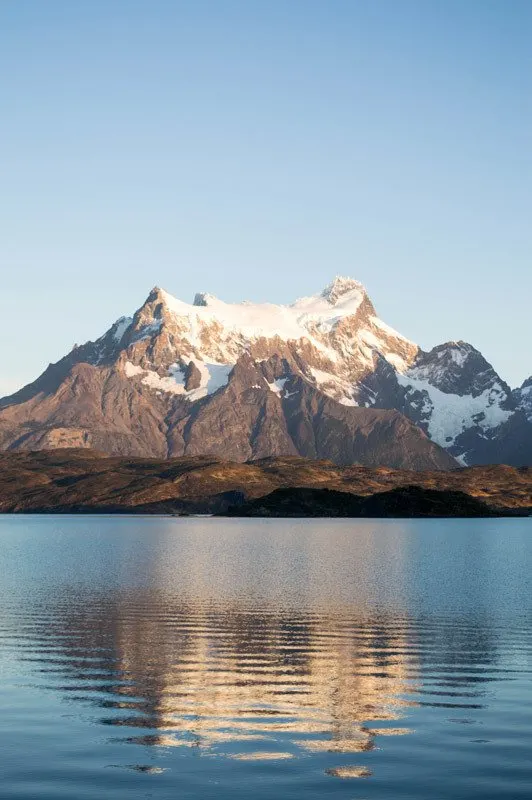
Ruta 40
Officially Argentina – and one of the world’s – longest road, Route 40 actually begins on the northernmost tip of Argentina at La Quiaca in Jujuy Province. It continues 5,194 kilometres south to reach Río Gallegos in the Santa Cruz Province in Argentine Patagonia and transects both northern and southern Argentine Patagonia.
I’ll only be covering the Patagonia section of this route: focussing on Bariloche heading south. This road is very different from the Carretera Austral, passing through mostly flat, grassy plains with a backdrop of ridged mountains in the west.
In my personal opinion, the scenery is less interesting than what you experience on a road trip along the Carretera Austral.
What most visitors do is link this road with the border crossing into Chile at Paso Río Don Guillermo, from where you can continue to southern Chilean Patagonia where lie Torres del Paine National Park and Puerto Natales.
Tierra del Fuego
The road through Tierra del Fuego, the island right at the tip of South America, is the least traversed of all driving routes in Patagonia. It contains both Chilean and Argentine territory; in fact, most road trips will see you moving between both countries.
Traditionally, travelers have driven south through Chilean Patagonia and crossed into Argentine Patagonia at Paso San Sebastián, from where you can continue south to reach Ushuaia, the most visited city on the island.
However, the Chilean section of the island is – in my opinion – vastly more beautiful, if practically entirely lacking in infrastructure. You can read about my experiences of staying in a beautiful lodge there and also of traveling independently in this guide to Chilean Tierra del Fuego.
Fast facts about driving in Patagonia
Renting a car in Patagonia
Renting a car for a road trip through Patagonia is a relatively straightforward. I personally always recommend doing so in Chile, rather than Argentina.
In my experience, prices have been cheaper and, thanks to an influx of international companies that have driven the standard of rental vehicles up, quality and service is better. However, the current issues with the economy in Argentina (2020) may well have lowered prices.
Rental prices vary significantly depending on where you pick up the car and also where you intend to drop the vehicle back off. As far as I’m aware, it is not possible to pick up a vehicle in Chile and drop it off in Argentina.
If you choose to rent a car from Santiago and return it in Punta Arenas, for example, you can also expect a significant one-way fee, which can be anything upwards of $400,000 CLP ($560 USD).
Learn more about the best places to arrive into in this post about getting to Patagonia.
Planning Your Trip to Patagonia?
Save time, stress & money with a customized travel itinerary planned for you by a Patagonia expert
Insurance and documents for car hire in Patagonia
You are required to have insurance for any vehicle that you rent in Chile or Argentina. The company generally requires you to pay a substantial deductible as liability in the event of an accident, such as damage, theft or a write off, which can be between $500 and $2,000 USD.
You will also normally be required to pay a guarantee using a credit card, anywhere in the region of $500,000 CLP ($700 USD) and $800,000 CLP ($1,100 USD).
Most international companies offer roadside assistance, but you’ll find the smaller, local companies across the region rarely do (something I have personally fallen foul of!).
Ensure that the car comes with its permiso de circulación (vehicle registration document) and the revision tecnica (MOT certificate); you normally find these in the glove compartment.
Insurance for crossing the border in Patagonia: If crossing into Argentina from Chile or vice versa with a rental vehicle, you need the necessary paperwork and insurance; this should be organized through your rental company at least 10 days in advance and generally costs $80,000 CLP ($112 USD).
Other important information for border crossing: Another important thing to note when driving between Chile and Argentina is that the customs officials will not permit you to bring fruit, vegetables or any fresh animal products across the border.
This isn’t enforced very strictly when crossing from Argentina to Chile in my experience, but you could get a heavy fine if you don’t declare any items in the other direction. It’s always better to do this and let the customs officials tell you if the offending items need to be binned rather than try and smuggle them in.
Many borders are open 24 hours, with others only during daylight hours. For a full list of this information, you should consult this website.
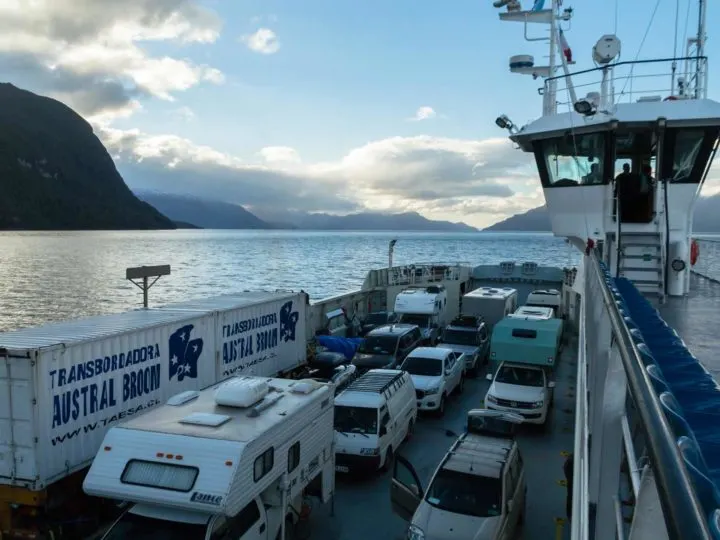
Chile: Renting a car for the Carretera Austral
There are various places along the Carretera Austral where you can rent a hire car. (For more information about what there is to see along this highway, read my ultimate guide to the Carretera Austral).
Car rental in the north: Aeropuerto Internaciónal El Tepual, the airport just outside of Puerto Montt on the northernmost tip of the Carretera Austral, has some of the cheapest car rentals I’ve found in Chile, with rental rates starting from $20,000 CLP ($30 USD) per day.
I recommend booking through Rental Cars, a comparison and booking site I’ve used on numerous occasions.
Car rental along the Carretera Austral: Another option is from Aerodromo Balmaceda, around halfway down the Carretera Austral and close to Coyhaique. Prices are much higher than in Puerto Montt and you can expect to pay at least $560,000 CLP ($768 USD) for a week’s rental. You can check up-to-date prices with Rental Cars, the company I use when hiring cars in Chile.
Hiring a campervan for the Carretera Austral
Hiring a campervan for the Carretera Austral is also very popular – particularly as it allows you to stop as and when you wish along your journey.
In the north: The best place to pick up your new wheels is in the north from Puerto Varas (a 30-minute drive northeast of Puerto Montt) with Chile Motor Homes or Wicked Campers.
Expect to pay $483,000 CLP ($662 USD) for a one-week rental. Prices will be significantly higher if you rent from one destination and return to another.
Along the Carretera Austral: I’m not aware of any places that rent out campervans along the Carretera Austral. Please let me know in the comments if this is incorrect!
Chile: Renting a car in southern Chilean Patagonia and Tierra del Fuego
There are two main towns in southern Chilean Patagonia: Punta Arenas (with the largest airport) and Puerto Natales (the gateway to Torres del Paine National Park).
The cheapest place to pick up a rental car is in Punta Arenas, although there are also rental companies in Puerto Natales. You can expect to pay from $236,000 CLP ($332 USD) for a week’s rental of a small car.
There is nowhere to rent a car in Tierra del Fuego, so you’ll need to organise rental in the nearest city, Punta Arenas.
Hiring a campervan for southern Chilean Patagonia
If you’re looking for a campervan for exploring Patagonia, the best place to pick up your new wheels is in Punta Arenas. Chile Motor Homes, Wicked Campers and Holiday Rent have depos here. Expect to pay $480,000 CLP ($658 USD) for a one-week rental.
There is nowhere to rent a campervan in Tierra del Fuego, so you’ll need to organise rental in the nearest city, Punta Arenas.
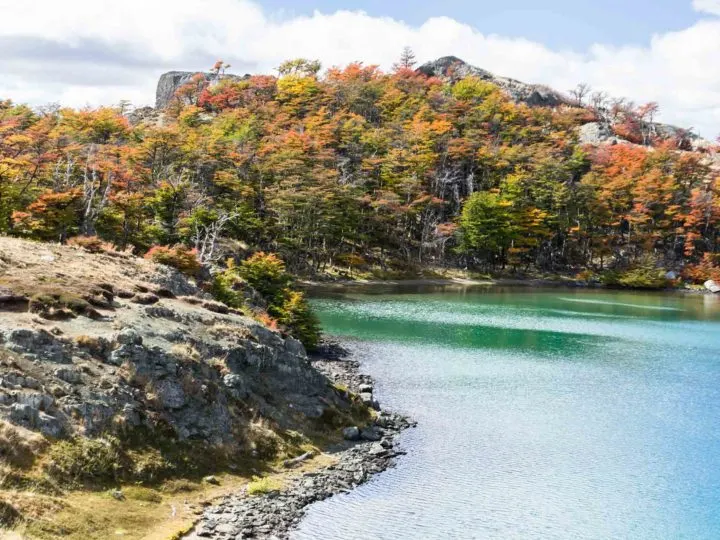
Argentina: Renting a car for Argentine Patagonia, Ruta 40 and Tierra del Fuego
The cheapest place to pick up a rental car is in Bariloche, where prices start from $160,000 CLP ($225 USD) for a one-week rental. However, from Bariloche, it’s an 18-hour drive south along Ruta 40 to reach El Chaltén and the rest of southern Argentine Patagonia, so bear in mind that you’ll need to drive this both ways to avoid an extortionate one-way fee.
Instead, if you plan on visiting the region, it’s easier to rent in El Calafate, where there are a number of international companies based in both the airport, Aeropuerto Internacional de El Calafate and in the town itself. Expect to pay from $230,000 CLP ($330 USD) for a week’s rental of a small car.
Prices for rental in Ushuaia from the airport, Aeropuerto Internacional de Ushuaia, start from $250,000 CLP ($350 USD) for a one-week rental of a small car.
Argentina: Hiring a campervan for Argentine Patagonia, Ruta 40 and Tierra del Fuego
I have no experience of encountering campervan rental companies in Argentina and, I’ll be honest, I’m struggling to find any further information online. If you’ve done it and want to share your experience with the community, please reach out to me via email or in the comments below!
Essentials to know before embarking on a Patagonia road trip
The main appeal of a Patagonia road trip is the fact that, with your own transport, you can stop practically anywhere you wish for a photography, for a picnic or, in some parts, even to camp overnight.

The latter is one of the reasons why I recommend that people bring a tent with them for the trip, as wild camping at different spots along the road – beneath a practically unblemished sky – is quite something and many of the national parks have remote camping sites just waiting for you to pitch up.
However, those who enjoy a spot of comfort will find that lodgings are becoming increasingly of better quality and comfort level – and still grant easy access to beautiful night skies.
Note that the wind can be fierce along Ruta 40, so finding a protected site can be difficult. iOverlander (mentioned below) is your essential guide with this.
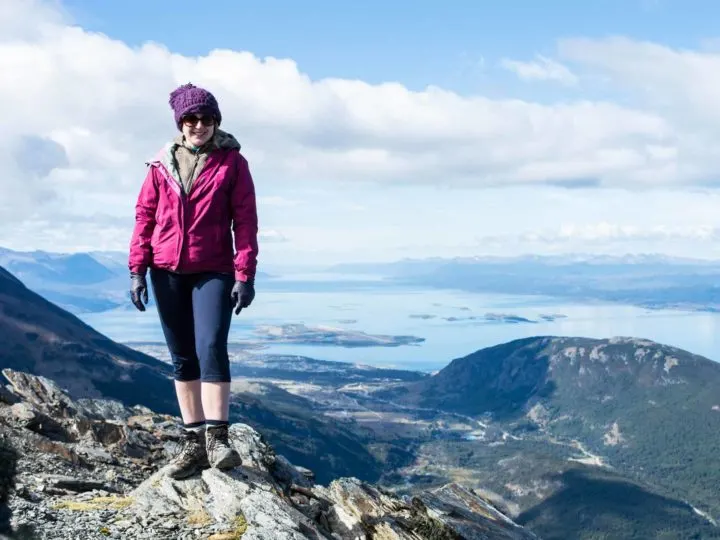
If you do drive, I’d recommend the following:
- Allow yourself a flexible itinerary. In Patagonia, things don’t always go quite to plan, so leave yourself plenty of cushion for your trip.
- A 4WD vehicle is not essential but a high-clearance vehicle and patience are indispensable. There are a handful of places where your rental company will advise you not to drive unless you have a 4WD. Listen to them! They know what they’re talking about and you do not want to get stranded or stuck anywhere – particularly as breakdown services are costly and extremely slow!
- Avoid driving faster than 60 kilometres per hour. Possible hazards include tire punctures, chips to the windscreen from gravel, and unexpected wildlife on the road. Pack food, water and a sleeping bag in case of breakdowns. When picking up your vehicle, double-check it has its spare tire – you may well want it!
- Fill up with fuel every time you see a gas station. While there are now plenty of gas stations in Patagonia, the rule of thumb is to fill up whenever you see one. I’ve listed where they are in the area-specific tips below.
- Pick up a copy of the COPEC Rutas de Chile map. This map of all of Chile and Argentine Patagonia is indispensable for anyone driving in Patagonia. You can theoretically pick it up from any COPEC gas station in Chile for around $3,000 CLP ($4 USD) – however, in practice, many places don’t stock it, so you may need to visit a couple. It has all COPEC gas stations marked on it; as the most frequent of all the companies selling fuel in Chile, this is useful stuff. They also have Argentine fuel stations marked.
- Download maps.me. This free app allows you to download maps of Patagonia to your phone (do this while you still have a WIFI connection!) that can then be used offline. Their maps use OpenStreetMap data (another great website for Patagonia) so generally have hiking marked accurately on them.
- Download the ioverlander app. This free app is a crowd-sourced guide to road conditions and campsites as compiled by overlanders (people who travel overland). It is an indispensable resource for helping you to find good wild camping spots, as well as up-to-date information about the state of the roads in Patagonia. You do need internet to be able to access the maps in the app.
- Make sure your normal sim card works or pick up a local sim card or esim for Chile and for Argentina. If you plan on booking accommodations and doing other logistical stuff en-route, don’t expect to be able to rely on the internet anywhere in Patagonia. The internet reception through my phone is invariably faster than what you can pick up through WIFI at most hotels and hostels, so do yourself a favour and sort this before you get to Patagonia.
- Consider picking up hitchhikers. The vast majority are your fellow travellers just looking for a kind stranger to give them a ride. They’ll be ever so grateful if you do!
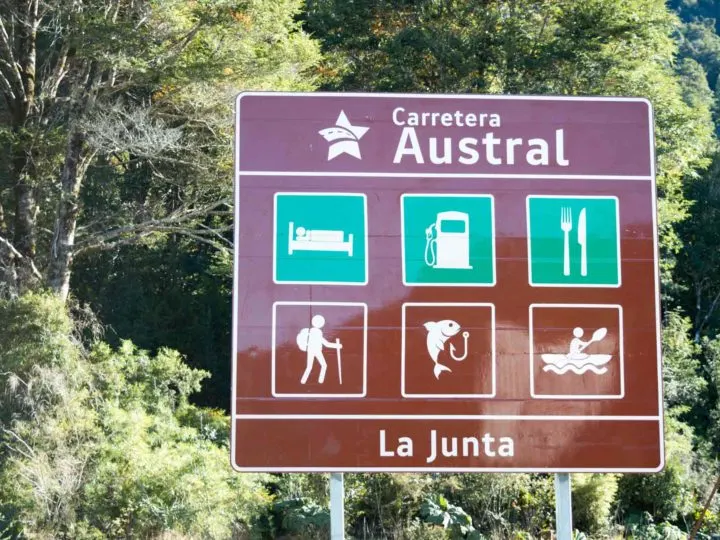
Advice for driving the Carretera Austral
If you want to drive the Carretera Austral, first I recommend you read my complete guide to visit Ruta 5 aka the Carretera Austral and secondly, I suggest you follow these tips:
- Around 90% of the road from Puerto Montt to Puyuhuapi is now paved. This means that you really should have no issue on this stretch of road with a normal, low-clearance car.
- You can find updates on the state of the roads here (English). This should tell you exactly where roadworks are taking place. Note that road works can cause sections of the road to be closed, normally between 2pm and 5pm during the day. This information is best found by consulting the tourism office of the town you’re in and then planning accordingly.
- This site (English) gives you information about the different border crossings along the Carretera Austral. You can find information about the state of the roads – many of which are just gravel or in worse condition. You can find opening hours for all of the border crossings here.
- Wild camping is generally possible.In most cases, you can pitch up practically where ever you want along the Carretera Austral, although the free ioverlander app should give you a good sense of where you can’t and where it’s recommendable to stay. Practice ”leave no trace” principles and make sure that whatever rubbish you bring in you take out with you. If the land is clearly privately owned and there’s a dwelling nearby, be sure to pop in and ask for permission before settling down for the night.
- Along the Carretera Austral, Entel has the best phone coverage. Claro comes in second. Sim cards can be picked up from booths manned by these companies in big shopping malls in cities such as Santiago or even in some corner shops. You top it up in pharmacies (don’t ask me why!) by asking for recarga.
- Make sure your car insurance covers transit along the Carretera Austral. I had a company in Coyhaique who tried to rent me a vehicle but said it wasn’t covered for the road. Go figure.
- Gas stations are located in: Puerto Montt, Hornopirén, Chaitén, Futaleufú, La Junta, Puyuhuapi, Puerto Cisnes, Mañihuales, Puerto Aysén, Puerto Chacabuco, Coyhaique, Chile Chico, Puerto Río Tranquilo, Cochrane and Villa O’Higgins.
- If you start in Puerto Montt, there are two ferry crossings before you reach Chaitén. For more information, read this article about travelling the Carretera Austral.
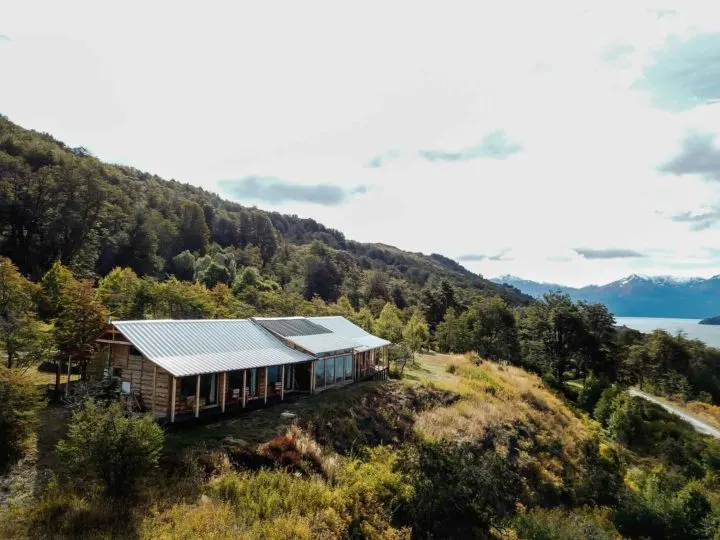
Advice for those driving in southern Chilean Patagonia
If you plan to drive anywhere around Punta Arenas, Puerto Natales or in Tierra del Fuego, bear the following in mind:
- Most of the main roads around Punta Arenas and Puerto Natales are paved. However, once you get away from the main highways (Ruta 255 and Ruta 9), many are unpaved gravel roads. Generally, these are fine to drive on with vehicles with some clearance, but you’ll want to take it slow to avoid gravel bouncing up into your windscreen.
- Practically all roads in Torres del Paine are unpaved. Again, you should have no issue traversing these with a normal vehicle, even one with low clearance.
- Roads in Chilean Tierra del Fuego are practically all gravel, except the road from the very north of the island to Onaisin. If you plan to head deep into the Chilean side of the island, you will need a vehicle with high-clearance and I would personally recommend a 4×4 as poor weather conditions may cause roads to become unpassable – and there really isn’t anyone coming to help you here! The road between San Sebastián and Cullén in Tierra del Fuego is also in a dreadful state and I wouldn’t recommend driving it!
- Gas stations are located in: Punta Arenas, Puerto Natales, Terminal San Gregorio, Cerro Sombrero, Cullén, Porvenir and Russfin.
Read this guide to Tierra del Fuego for more information.
Advice for driving Ruta 40 and Argentine Patagonia
If you’re planning on hiring a rental car in Argentine Patagonia, the following information should be helpful:
- Claro is the best cell network for Argentine Patagonia. However, connection can be poor in lots of parts, including El Chaltén. You can buy a sim card by going to any of the company’s shops in Buenos Aires or other Argentine cities. The full process is described in detail here.
- Gas stations are scarce south of the Chile Chico border crossing and are located in the towns of: Perito Moreno (the town, not the glacier), Gobernador Gregores, Tres Lagos, El Calafate, Esperanza, and Tapi Aike (although the latter is often closed and, when open, is cash only), Río Gallegos, Río Grande, Tolhuin and Ushuaia.
Patagonia road trip itineraries
If you’ve got the time, spirit of adventure and the money, there’s no excuse not to embark on a road trip through Patagonia, and I strongly recommend you do it. Some of the most powerful memories I’ve got from my different trips exploring Patagonia come from road trips through the region’s wild landscapes.
The following itineraries give you an idea of various different road trips available to you for different parts of Patagonia.
If you’re interested in learning more about any of them, I offer a trip planning service for Patagonia and can provide you a fully customised itinerary, taking the stress and hassle out of putting together your trip. Find out more information here.
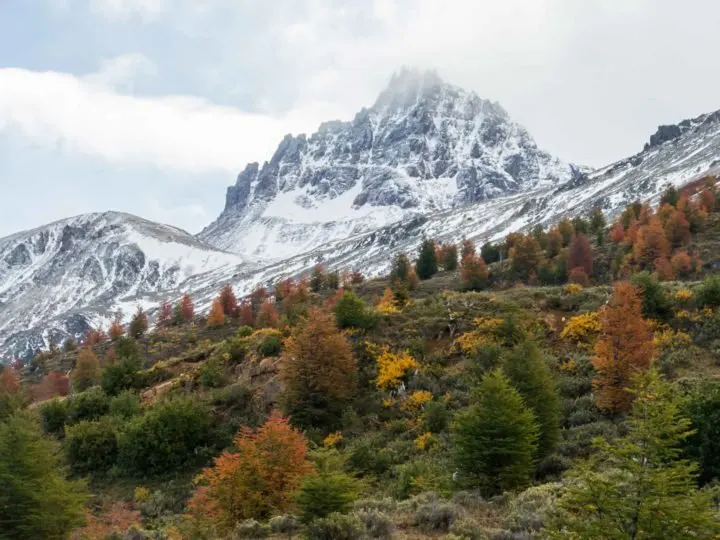
Fourteen days driving the Carretera Austral
Two weeks is enough time to drive, and enjoy, most of the Carretera Austral. However, because of the prohibitively high costs of one-way rentals, it makes financial sense to hire and drop off your vehicle in the same place.
This route includes most of the Carretera Austral, as well as a short trip through Chiloé, another of the most magical parts of Chile.
Overview of this 14-day Carretera Austral itinerary:
- Day One: Puerto Montt to Hornopirén
- Day Two: Hornopirén to Chaitén
- Days Three and Four: Parque Nacional Pumalín
- Day Five: Puyuhuapi and the hanging glacier in Parque Nacional Queulat
- Days Six and Seven: Villa Cerro Castillo and Parque Nacional Cerro Castillo
- Day Eight: Puerto Río Tranquilo and the marble caves
- Days Nine: Parque Nacional Patagonia
- Days Ten and Eleven: The Naviera Austral ferry to Quellón
- Days Twelve and Thirteen: Chiloé Island
- Day Fourteen: Puerto Montt
Day One: Puerto Montt to Hornopirén
Rent a car from the airport in Puerto Montt using Rental Cars. Either board the Naviera Austral ferry service from Puerto Montt to Chaitén (9 hours, $114,000 CLP ($146 USD) per vehicle plus $17,300 CLP ($22 USD) for passengers) or drive south to Hornopirén (3 hours).
Stay overnight in the cosy bedrooms of Hosteria Catalina.
Day Two: Ferry boat from Hornopirén to Chaitén
Board the SOMARCO ferry at 10.30am to Caleta Gonzalo (4.5 hours, $33,500 CLP ($43 USD) per vehicle including passengers; price includes ferry to Leptepú and to Caleta Gonzalo) and head south to Chaitén (1 hour).
Stay overnight in the basic cabins at Chucao Bosque y Cabañas.
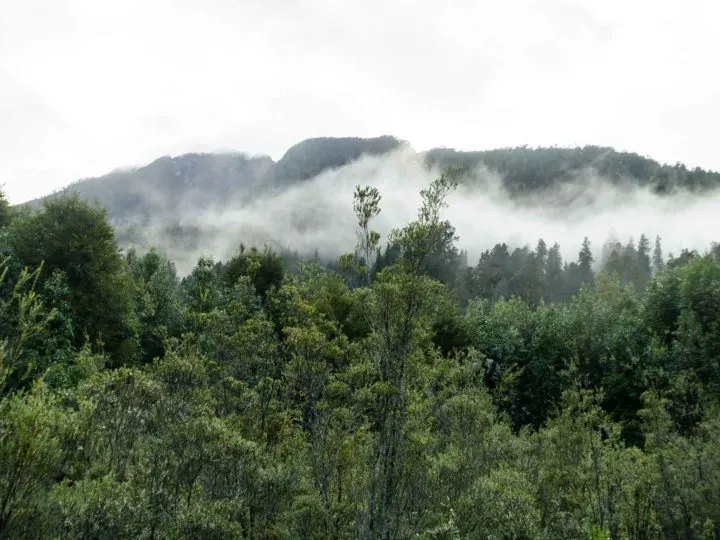
Days Three and Four: Parque Nacional Pumalín
Enjoy Parque Nacional Pumalín, one of the most spectacular parks along the Carretera Austral, packed full of hiking opportunities, hot springs and kayaking.
Day Five: Puyuhuapi and Parque Nacional Queulat
Drive south to Puyuhuapi (2.5 hours) and spend the afternoon in Parque Nacional Queulat, where the spectacular Ventisquero Queulat (or Queulat Hanging Glacier) is located.
Stay overnight in the affordable Hostal Aonikenk, which is ideal if you’re self-catering.
You MUST make a reservation in order to visit the park. You must do this on this website. You can only enter the park between 9:00am and 14:30pm (you can stay within the park until 16.30pm) and you must bring your reservation code on your phone or printed off to show at the park entrance.
Days Six and Seven: Villa Cerro Castillo and Parque Nacional Villa Cerro Castillo
Drive south to Villa Cerro Castillo (6 hours) via Coyhaique, the largest town along the Carretera Austral and a great place to pick up provisions in the large UNIMARC supermarket located there.
Spend the following day hiking the trail up to Lago Cerro Castillo for incredible views of Cerro Castillo, a castle-shaped peak in the middle of park.
Stay in the beautifully decorated rooms at Refugio Cerro Castillo, with views of the mountain from the windows.
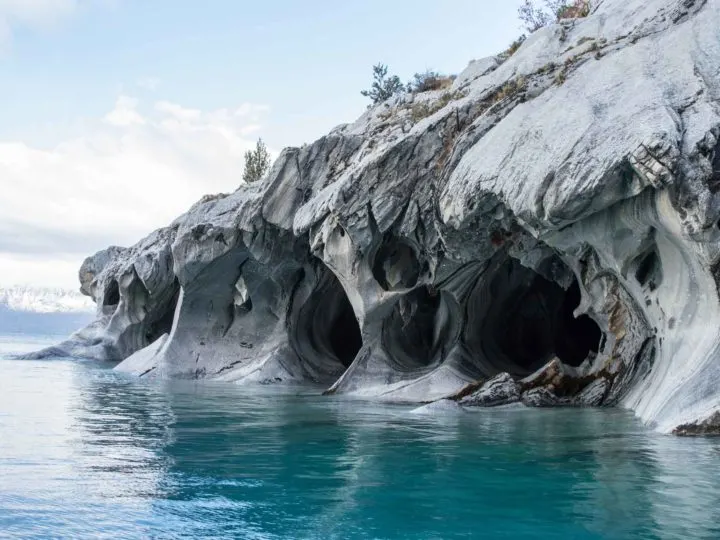
Day Eight: Puerto Río Tranquilo and the Marble Caves
Drive south to Puerto Río Tranquilo (3 hours) and visit the marble caves on the cyan waters of Lago General Carrera, or go ice trekking on the nearby Glaciar Exploradores.
Stay overnight in nearby Mallin Colorado Ecolodge (read my review of this Patagonian lodge).
Days Nine: Parque Nacional Patagonia
Drive south to Valle Chacabuco (2.5 hours), a part of the beautiful Parque Nacional Patagonia.
Spend the day hiking in the national park and drive back to Mallin Colorado to stay the night.
Days Ten and Eleven: Naviera Austral Ferry to Quellón
Drive north to Puerto Cisnes (8-9 hours) to stay overnight, The following morning, catch the Naviera Austral ferry to Quellón (12.5 hours, $179,000 CLP ($188 USD) per vehicle plus $30,500 CLP ($32 USD) per passenger), a town in the south of Chiloé Island. This is a beautiful journey north, just be aware that it only departs three times per week.
Note that tickets give you a seat on the boat (like a reclining seat on a bus), not a cabin. When you reach Quellón, drive north to Castro (1.5 hours) and stay overnight in the picturesque converted palafito, Palafito 1326.
Days Twelve and Thirteen: Chiloé Island
Explore the palafitos (old fishermen dwellings on stilts) of Castro, take a day trip out to Cucao to hike in the beautiful Parque Tepuhueco, or drive out to Isla Quinchao or Isla Lemuy for the day.
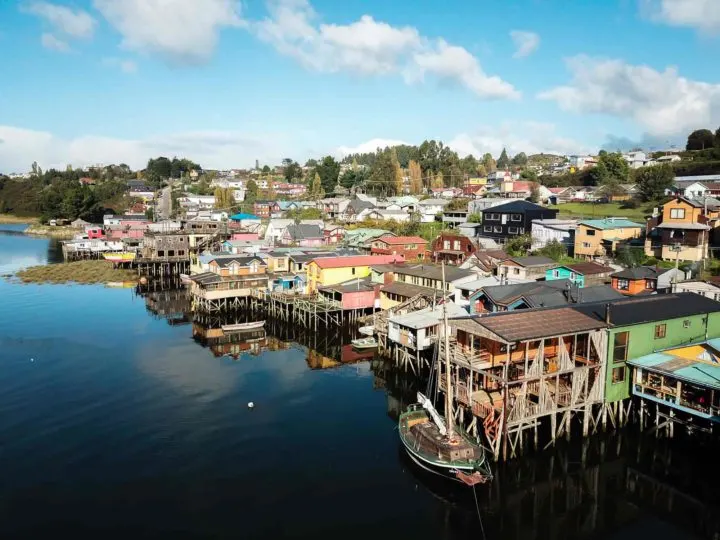
Day Fourteen: Puerto Montt
Drive north back to Puerto Montt (4.5-5) hours via the boat from the Chacao port (operates 24 hours, 30 mins, $12,600 CLP ($16 USD) vehicle with passengers).
Changes you can make to this Carretera Austral Itinerary: Add an extra two days and visit Futaleufú, a three-hour drive east of Chaitén that is known as one of the world’s best places for white-water rafting and also has some beautiful hikes.
Two-week Carretera Austral self-drive itinerary from Balmaceda
This road trip through Patagonia offers an alternative route, this time arriving in Balmaceda by plane and exploring most of the southern part of the Carretera Austral:
Overview of this 14-day Carretera Austral itinerary:
- Day One: Balmaceda to Puyuhuapi
- Day Two: Parque Nacional Queulat
- Days Three to Five: Villa Cerro Castillo and Parque Nacional Cerro Castillo
- Days Six and Seven: Puerto Río Tranquilo and the Marble Caves
- Days Eight to Ten: Parque Nacional Patagonia
- Day Eleven: Caleta Tortel
- Day Twelve and Thirteen: Chile Chico
- Day Fourteen: Ferry and Drive to Balmaceda
Day One: Balmaceda to Puyuhuapi
Fly into Balmaceda and rent a car using Rental Cars. Drive north to Puyuhuapi (5.5 hours) and stay overnight in the affordable Hostal Aonikenk, which is ideal if you’re self-catering.
Day Two: Parque Nacional Queulat
Spend the day in Parque Nacional Queulat, where you find the spectacular Ventisquero Queulat (or Queulat Hanging Glacier) and return to Puyuhuapi at night.
Covid-19 update: You MUST make a reservation in order to visit the park. You can do this on this website, but you will need to pay in cash (bring small notes) upon arrival. You can only enter the park between 9:00am and 14:30pm (you can stay within the park until 16.30pm) and you must bring your reservation code on your phone or printed off to show at the park entrance.
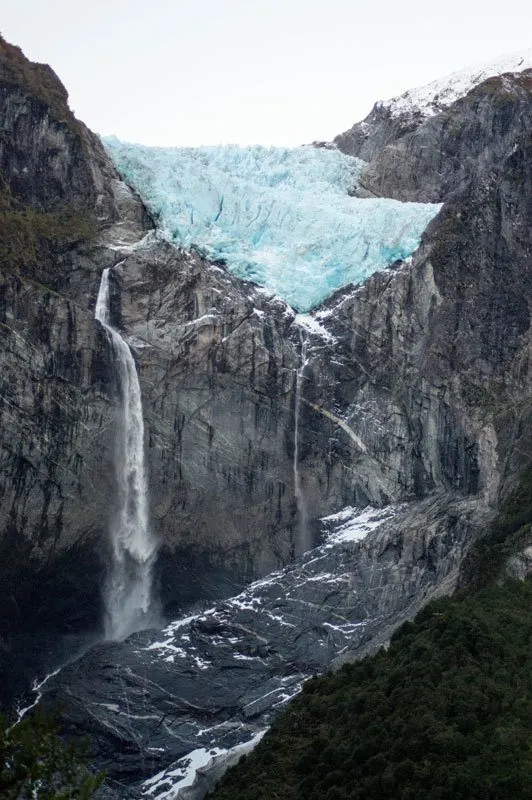
Days Three to Five: Villa Cerro Castillo and Parque Nacional Cerro Castillo
Drive south to Villa Cerro Castillo (6 hours) via Coyhaique, the largest town along the Carretera Austral and a great place to pick up provisions in the large UNIMARC supermarket located there.
Stay in the beautifully decorated rooms at Refugio Cerro Castillo, with views of the mountain from the windows.
Spend a day or two in the national park, hiking the trail up to Lago Cerro Castillo for incredible views of Cerro Castillo, a castle-shaped peak in the middle of park, and other trails in the other side of the national park.
Days Six and Seven: Puerto Río Tranquilo and the Marble Caves
Drive south to Puerto Río Tranquilo (3 hours) and visit the marble caves on the cyan waters of Lago General Carrera, or go ice trekking on the nearby Glaciar Exploradores.
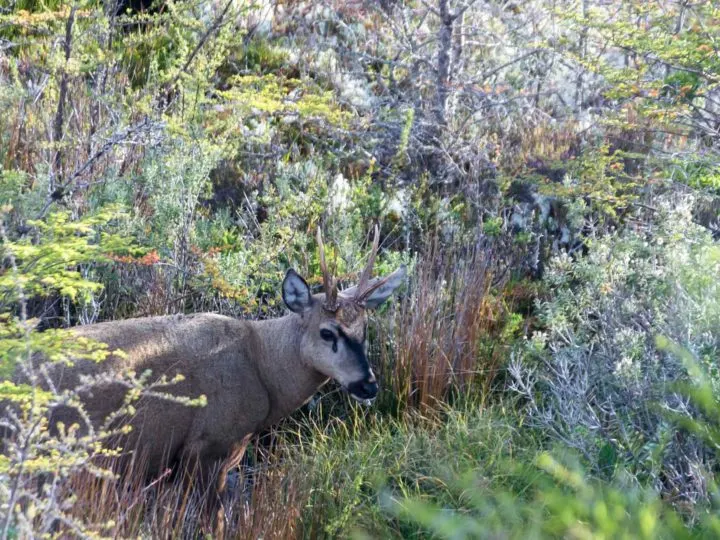
Stay overnight in nearby Mallin Colorado Ecolodge (read my review of this Patagonian lodge).
Days Eight to Ten: Parque Nacional Patagonia
Drive south to Valle Chacabuco (2.5 hours), a part of the beautiful Parque Nacional Patagonia. Spend a day or two hiking in the national park; you can also visit Sector Tamango, which is a couple of kilometres east of Cochrane.
Stay overnight in the luxurious Lodge at Valle Chacabuco or in the more utilitarian guest house Lejana Patagonia in Cochrane, an hour’s drive south.
Day Eleven: Caleta Tortel
Drive south to Caleta Tortel (3 hours) and enjoy this remarkable village, where there are no roads. Instead boardwalks traverse for miles across this picturesque the fjord-side settlement.

Stay overnight in the modern bedrooms of the stylish Entrehielos Lodge.
Day Twelve and Thirteen: Chile Chico
Drive north to Chile Chico (6.5 hours). This is along the southern shores of Lago General Carrera, which are both vertiginous and horribly potholed – so you’ll want a 4WD if you plan on undertaking this journey.
Spend a day in the northernmost sector of Parque Nacional Patagonia, Jeinimeni, for glorious mountain views and some beautiful short hikes.
Stay overnight in the charming Hostería de la Patagonia.
Day Fourteen: Ferry and Drive to Balmaceda
Take the Somarco ferry across to Puerto Ingerniero Ibáñez (2 hours, $19,750 CLP ($25 USD) for vehicles plus $2,300 CLP (3 USD) for passengers) and then drive back to Balmaceda to return the car (1 hour).
Changes to make to this itinerary: Add three days and drive down to Villa O’Higgins (7 hours) where there is hiking, boat visits to and flyovers of Glacier O’Higgins. You may well see a huemul – a rare species of deer – on the road here.
A 14-day drive through Southern Chilean and Argentine Patagonia
Two weeks is enough time to explore the main highlights of southern Chilean and Argentine Patagonia.
You’ll cover large distances, and spend a lot of time on the road, but can break it up with visits to extraordinary national parks and natural highlights, such as the Perito Moreno Glacier and the king penguin colony in Tierra del Fuego.
Overview of this 14-day Carretera Austral itinerary:
- Day One: Punta Arenas
- Days Two to Four: Puerto Natales and Parque Nacional Torres del Paine
- Days Three and Four: Parque Nacional Los Glaciares and Glaciar El Perito Moreno
- Day Five to Seven: El Chaltén and Parque Nacional Los Glaciares
- Day Eight: Río Gallegos
- Day Nine: Parque Nacional Pali Aike
- Day Ten: Parque Pinguino Rey and Ushuaia
- Days Eleven and Twelve: Ushuaia
- Day Thirteen: Porvenir
- Day Fourteen: Ferry to Punta Arenas
Day One: Punta Arenas
Fly into Punta Arenas and rent a car using Rental Cars. Spend a day visiting the nature reserves located nearby or driving to the end of the road beyond Puerto del Hambre, where you can appreciate the mountains of Isla Dawson and Tierra del Fuego and may see dolphins swimming in the Strait of Magellan.
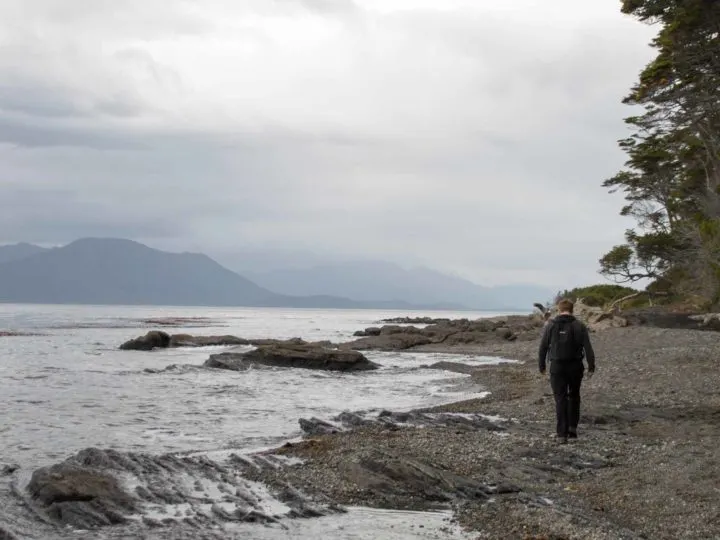
Stay overnight in Swedish design-inspired Hotel Ilaia.
Days Two to Four: Puerto Natales and Parque Nacional Torres del Paine
Drive north to Puerto Natales (3 hours) and then into Torres del Paine National Park (1.5/2 hours, depending on which entrance you use).
Spend a couple of days hiking sections of the W trek and exploring the different viewpoints and short hikes around the national park. Stay overnight in one of the luxury hotels or more budget-friendly cabins or camping in Torres del Paine National Park.
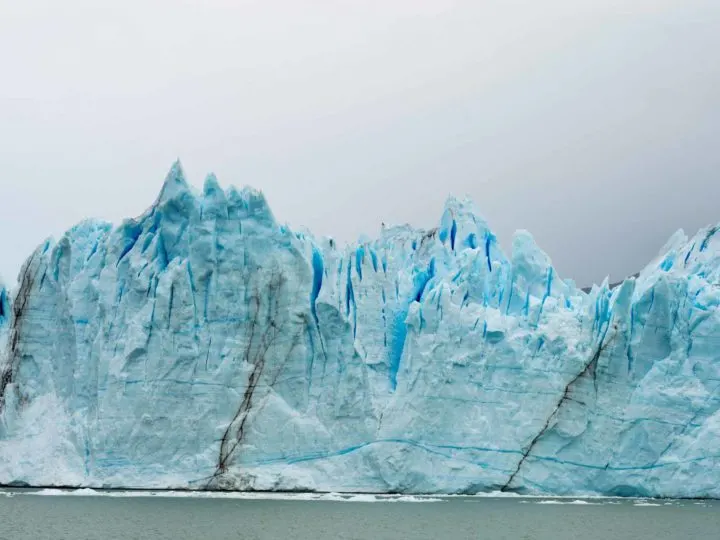
Days Three and Four: Parque Nacional Los Glaciares and Glaciar El Perito Moreno
Drive east to El Calafate (3-5 hours, depends on traffic at the border) and enjoy the scenery across Lago Argentina. Stay overnight in Design Suites Calafate, which has mesmorizing views of the lake.
Drive east to the southernmost section of Parque Nacional Los Glaciares (1.5 hours), one Argentina’s best national parks, to visit El Perito Moreno, the country’s most impressive glacier. Return to El Calafate for the night.
Day Five to Seven: El Chaltén and Parque Nacional Los Glaciares
Drive to El Chaltén (3 hours). Spend a couple of days hiking here, including the most well-known hike up to Laguna de los Tres and Monte Fitzroy. Stay overnight in the charming Nothofagus B&B.
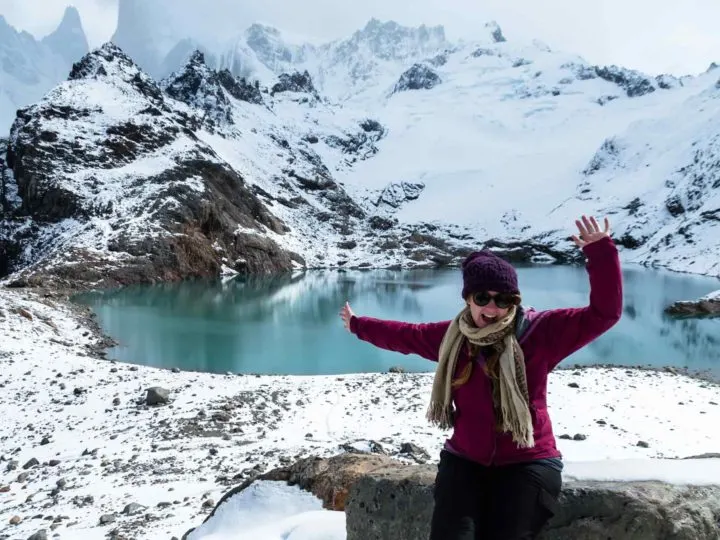
Day Eight: Río Gallegos
Drive south to Río Gallegos (6 hours), a nondescript port town on the Atlantic coast. Stay overnight in Hotel Patagonia, the smartest and most upmarket (but still affordable) option in town.
Day Nine: Parque Nacional Pali Aike
Drive into Chile and to Parque Nacional Pali Aike (2 hours), a barely-visited national park with volcanic craters, lakes filled with flamingos and the chance to spot armadillo and even puma.
Stay overnight in nearby Punta Delgada and the simple but comfortable Hostal San Gregorio.
Day Ten: Parque Pinguino Rey and Ushuaia
Drive to Ushuaia (7 hours) via Parque Pinguino Rey, a private reserve home to a colony of king penguins.
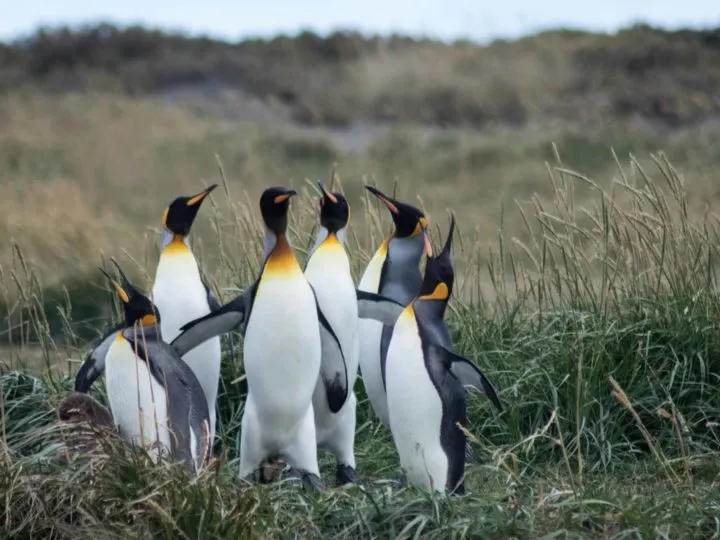
Cross the border back into Argentina at Paso San Sebastián and stay overnight in La Casa en Ushuaia, a smart little guesthouse with incredible views of the Beagle Channel.
Days Eleven and Twelve: Ushuaia
Explore Ushuaia, hiking up to Glacier Marshall, exploring Parque Nacional Tierra del Fuego with its spectacular views of the Beagle Channel or taking a boat trip out to visit sea lion and penguin colonies.
Day Thirteen: Porvenir
Cross the border back into Chile and drive to Porvenir (5.5 hours), a small town on the western edge of Tierra del Fuego and stay overnight in the neat, spacious bedrooms at Yendegaia House.
Day Fourteen: Ferry to Punta Arenas
Take the TABSA ferry from Porvenir across to Punta Arenas (2 hours, $43,000 CLP ($55 USD) for vehicle including passengers) and return the vehicle to the airport.
A road trip through Chilean Tierra del Fuego
If you’re interested in exploring Chilean Tierra del Fuego, an incredible remote and wild part of the region and one that truly does feel like the very ends of the earth, download my free Patagonia ebook, which has an itinerary that covers this stretch of the country. You can also read this article.

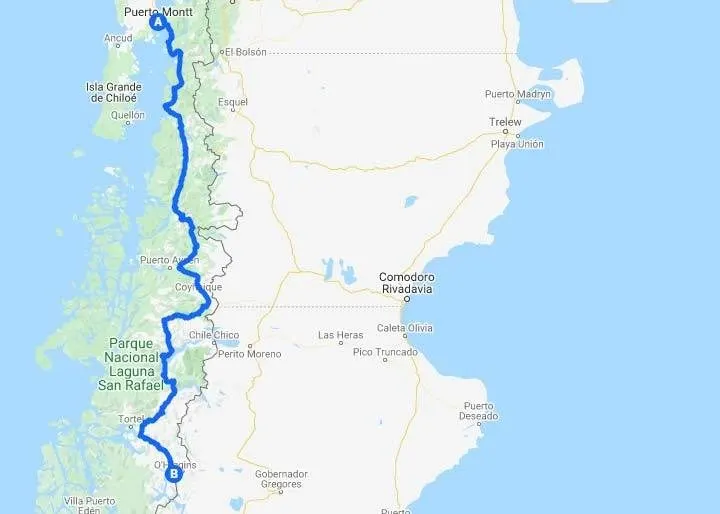
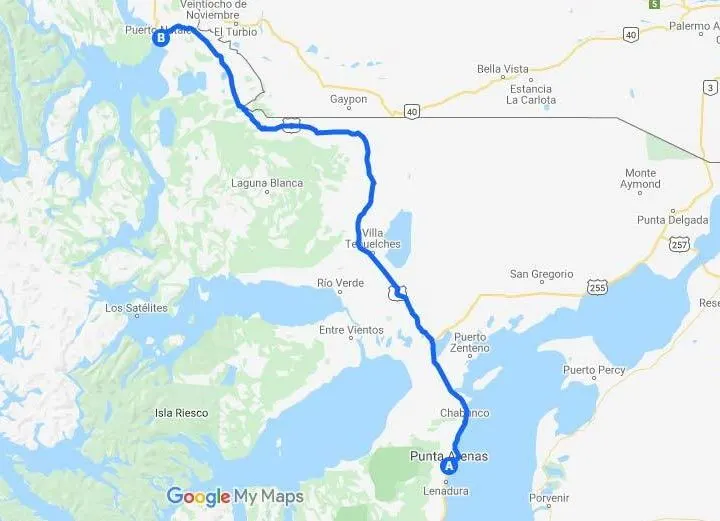
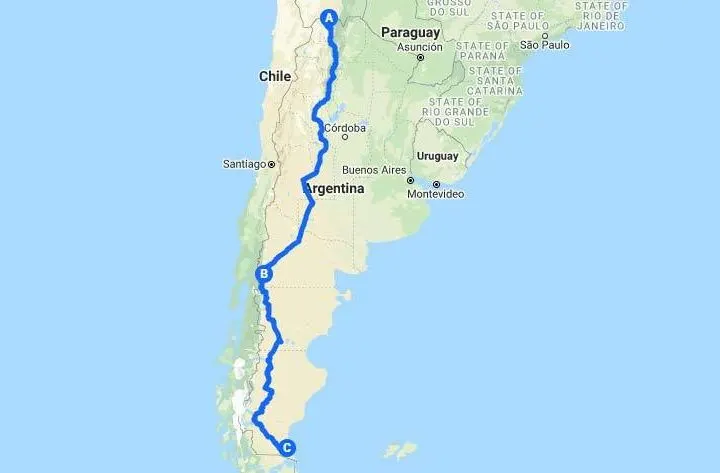
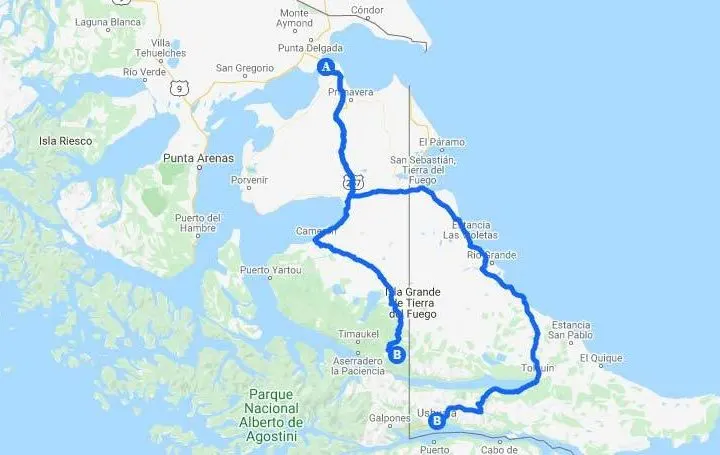
Lena
Friday 1st of March 2024
Hi Steph,
Your guide has been very useful in planning my trip, thank you very much.
I am going to the CA for 2 weeks. I had a question about cash – your article recommends taking lots of US dollars, since paying for hotels and tours this way as a foreigner can exempt you from VAT.
However I’ve read on a few sites that US dollars aren’t accepted in a lot of places in Chilean Patagonia, and further still that where they are, you often get a poor exchange rate (outweighing the tax saving). I’ve also read mixed things about using credit cards – some saying they are widely accepted, others saying not.
Overall what mix of USD and CLP would you recommend withdrawing for 15 days in the CA? I can withdraw the chilean pesos in Santiago before flying down.
Thank you for your time, Lena
Steph Dyson
Sunday 10th of March 2024
Hi Lena, honestly, that's a very hard question to answer. I'm currently in Chile and have had no issue paying with credit card so far - but I'm not yet anywhere as remote as the Carretera Austral. Whenever I have travelled there, I've just paid in Chilean pesos as a lot of small B&Bs won't give you the tax saving anyway. So my recommendation would be just to travel with some CLP, pay using card where possible and reach out to any hotels you're planning on staying at in advance and asking them how you'll be able to pay for your stay. Steph
Wayne Bell
Tuesday 18th of July 2023
Hi Steph, I'm going to read your whole book before driving the Carretera Austral, but I am trying to do all my reservations before we go in November and I am confused at the fine print of the rental car companies in both Santiago and Puerto Montt. Euro Rent A Car seems to have the most liberal rules, but I am worried that driving on "unpaved roads" or getting on a ferry--which you have no choice but to do--"violates" the rental agreement. Obviously everyone is doing it anyway, but am I missing some important detail about buying 3rd party insurance or something? I would appreciate the advise of your experience on how to do this properly. We do not plan to cross into Argentina, we are just going to round trip from Puerto Montt to Villa O’Higgins and back.
Steph Dyson
Wednesday 20th of September 2023
Hi Wayne, unfortunately you need to find a rental company who does allow this. Econorent does allow the above (I believe - double check). Steph
Vinodh
Monday 29th of May 2023
Hi Steph. I’m planning a short road trip from El Calafate to Torres del Paine and back to El Calafate. Is it okay to carry some spare gas in a container across the border to Chile? A few blogs indicated that it’s not allowed. Grateful for your experience with this. Thank you Vinodh
Steph Dyson
Monday 5th of June 2023
Hi Vinodh, I've never had any experience with this but I can't see why it would be an issue. There's a fuel station not too far before the border from El Calafate, so I recommend filling up there and then if you do get fuel taken off you, you'll have fuel (and can head to Puerto Natales if you run out). Steph
rusty
Thursday 29th of December 2022
Hi Steph. I fly in to Puerto Montt Jan 16. Have to be in Santiago Feb 5 Want to get to El Chalten for maybe 4 days. Is it worth a week ton 10 days on the The Carretera Austral or am I better off to go to the Lakes district etc for a few days and work my way down to El Chalten via public transportation After because of the short time # weeks total) Thanks so much for your input. Rusty
Steph Dyson
Thursday 19th of January 2023
Hi Rusty, so sorry for the delay in getting back to you. I hope you're having a brilliant trip. I would have suggested it's definitely worth it going along the Carretera Austral! Steph
Adi
Monday 26th of December 2022
Hi,
Another very helpful article, thank you Steph!!!
Minor comment/question: the "Hiring a campervan for the Carretera Austral" section of the article appears under the "Chile: Renting a car in southern Chilean Patagonia and Tierra del Fuego" heading. Should it be under the "Chile: Renting a car for the Carretera Austral" heading instead?
Thank you!
Steph Dyson
Thursday 19th of January 2023
Thanks Adi - I will change this now!